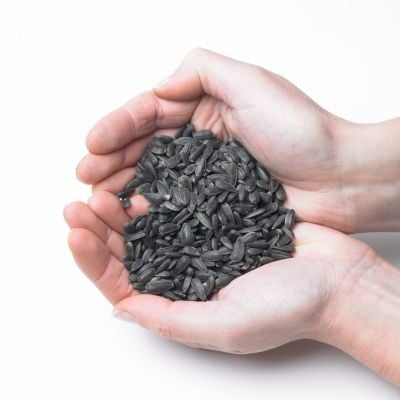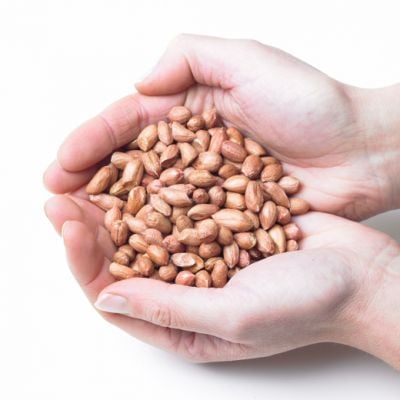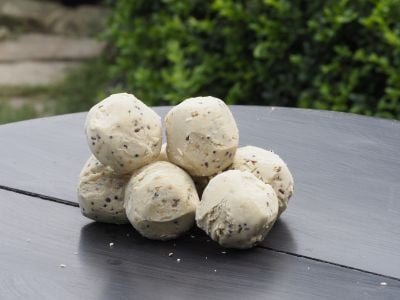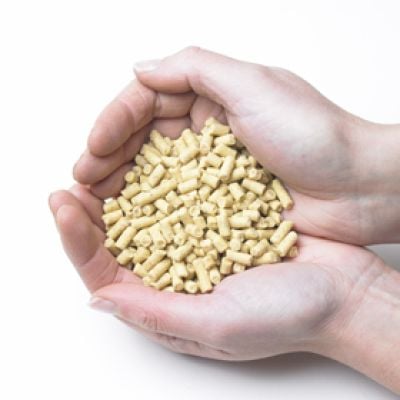Coal Tit Factfile
The Coal Tit is the smallest in the tit family we have in the UK, and is easy to identify with its black cap, black bib and distinct white rectangle on the back of the head and neck. It is a regular visitor to gardens, though due to its smalls size is often bullied off feeders by the larger Blue and Great Tits. It is an entertaining little bird to watch and is also one of the tamest of all garden birds, and will often stay put on peanut and suet feeders when approached and not fly off until you’re within several feet of it.
Video footage of Coal Tits
Coal Tit nesting and breeding habits
The nest is usually built well into a hole in a tree (with a preference for it to be fairly low down on the trunk), a wall, or in a bank on the ground. Nest boxes will sometimes be used but often the more dominant Blue and Great Tits will prevent this. Main materials used for the nest are moss and spiders’ webs, which is then mainly lined with hair and feathers. The female Coal Tit builds the nest and incubates alone, with the male bird providing her food whilst she’s on the nest. The clutch size is 9-10 eggs and there are 1-2 broods each season.
Coal Tit history and population trends
The population is now relatively stable, having increased in the last century due to large areas of land being planted with non-native connifers such as Sitka Spruce, which has very much benefited the species.
Behaviour traits of Coal Tits
There are a number of notable behaviours of the Coal Tit, with a key one being their level of dexterity when seeking out food. They effortlessly flit between branches and seed cones in dense conifer foliage, and, for example, can easily cling to the underside of a tree branch to pull out a hibernating insect in the cold winter months. They are also very apt at ‘caching’ food, which is the practice of hiding food for when it might be needed in the depths of winter – another reason the Coal Tit often survives relatively well in very cold weather. The practice of caching can often be observed at feeding stations in gardens, where a number of Coal Tits will repeatedly return to hanging feeders containing black sunflower seeds or hearts, then fly off with them and tuck the seed into crevices in tree bark etc. In the UK Coal Tits are largely resident and sedentary, with their ability to switch to different foods reducing their need to move great distances within the country to seek out food in the winter.
Coal Tit diet and food
The diet of the Coal Tit is very varied and this fact is probably one of the reasons the species is able to cope with very cold spells of weather better than other small songbirds (see ‘behaviour’ for some of the other reasons). Small insects form the main part of the diet, including their larvae and eggs. It will also eat conifer seeds including those of the Sitka Spruce, which is now the most numerous tree in the UK due to huge commercial plantations. In the garden, Coal Tits readily come onto peanut and suet feeders, plus have a real love of black sunflower seeds which they take from the feeder and then find a suitable perch to chisel the husk off in order to get to the highly nutritious seed.
What should I feed Coal Tits?
We recommend the following products to help attract Coal Tits to your garden.
Bird Food
Frequently Asked Questions
What does a Coal tit look like?
You can see on this page exactly what a Coal tit looks like, with both male and female birds having the same plumage. What you perhaps can’t get a sense of from the photo, though, is just how small Coal tits are. Coal tits are the smallest species of tit which breeds in the British Isles, with their length being just over 11cm and their weight just 8-10 grams.
What do you feed a Coal tit?
Coal tits will eat peanuts and suet pellets in a mesh feeder, fat balls and suet blocks in a suitable cage feeder, plus they also readily take black sunflower seeds and sunflower hearts from tube feeders and then hold them in their feet (typically on a branch) where they chip away at the seed.
Do Coal tits mate for life?
Like most small songbirds, Coal tits have a low life expectancy, with their average life span only being around two years. Therefore the question doesn’t really apply here, though It is technically possible that the same male and female birds might breed in successive years.
When do Coal tits nest?
Coal tits nest from late March onwards and into June, and may have a second brood.
Where do Coal tits come from?
The preferred habitat of Coal tits is coniferous woodland, and including that of non-native species such as Sitka spruce – which is why they’re commonly seen on the edge of large commercial tree plantations. Gardens with conifer trees and Leylandi will also be attractive to Coal tits.










